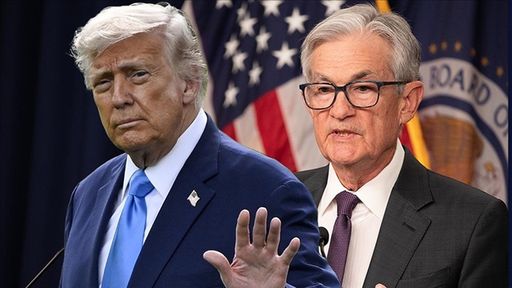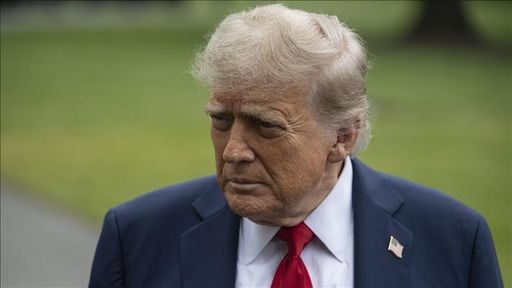Washington, DC — The war between US President Donald Trump and Jerome Powell has gone from simmering to full boil.
Once a slow burn of offhanded digs, Trump's campaign against the Federal Reserve Chair he appointed has erupted into a coordinated, multi-agency offensive.
Now, with $2.5 billion in Fed headquarters renovations under the microscope and allies in federal commissions circling, the question that once seemed academic now is swirling in Washington: Can Trump actually fire Powell?
Legally, the short answer remains no. But politically, the pressure has never been hotter.
Trump's dislike for Powell is no secret.
In meetings, in posts, even in handwritten letters, the president has railed against the Fed boss, calling him "Too Late" for not acting swiftly enough during the 2022 inflation crisis and, more recently, for refusing to cut interest rates despite Trump's urgings.
"Lower the rate — by a lot!" Trump scrawled in a note to Powell last month, underscoring his desire to juice the economy ahead of a tough election year.
Powell has kept his responses stoic, almost monk-like. At press conferences and testimony alike, he has insisted the Fed's decisions are rooted in data, not politics.
When pressed about Trump's pressure, Powell has said little, if anything, a silence that has only fuelled the president's fury.

Renovation becomes a flashpoint
This week, that fury turned surgical.
Russell Vought, Trump's Office of Management and Budget director, accused Powell of lying to Congress about the ballooning cost of the Fed's headquarters overhaul.
In a public letter, Vought claimed Powell violated oversight laws and ploughed ahead with "an ostentatious" renovation in the heart of the US capital.
"The President is extremely troubled by your management of the Federal Reserve System," Vought wrote, adding that Powell’s stewardship "does not comply with federal regulations."
The project's cost, originally estimated at $1.9 billion, has grown to $2.5 billion — a jump the Fed attributes to material inflation, labour shortages, and leasing extensions.
In June, Powell told Congress there were no extravagant perks in the renovation: "no VIP dining room, no new marble... just old elevators that have been there."
Trump officials aren't buying it.
In a move that went largely unnoticed at first, the president replaced three members of the National Capital Planning Commission, which oversees federal renovations, with White House loyalists, including Deputy Chief of Staff James Blair.
After their first commission meeting, Blair said Powell may have misled Congress and called for site visits and full plan disclosures.
"The project is either out of alignment with the plans... or Chair Powell was dishonest with the Senate Banking Committee," Blair said.

Legal Roadblocks and work arounds
Trump is pushing the Fed to slash interest rates, betting that cheaper borrowing will ignite a surge in spending and investment, sparking economic growth.
Powell is resisting lowering interest rates due to concerns that Trump's tariff policies could increase inflation, requiring more data before acting.
This has infuriated Trump, especially since he cannot directly fire Powell. A recent Supreme Court ruling on presidential power reinforced the notion that while executive officials serve at the president’s pleasure, the Fed is different — a "quasi-private" entity intentionally insulated from short-term political interference.
"The law’s clear," analysts say. "The Fed's independence is baked into its structure."
Still, Trump allies appear to be pursuing an alternate path: lay the groundwork for firing Powell "for cause," or wear him down until he resigns.
That's what some read in Vought's accusations and Blair's investigation: not just criticism, but a case for misconduct.
Peter Navarro, the president's longtime economic adviser, has labelled Powell "one of the worst Fed chairs in history." Commerce Secretary Howard Lutnick has said flatly: "He's got to change, and he's got to go."
And while Powell's term doesn’t expire until May 2026, Trump has hinted he may name a successor soon, a move that some worry could create a "shadow chair" dynamic that undercuts Powell’s authority before he even steps down.
Bill Pulte, director of the US Federal Housing Finance Agency, says he's encouraged by reports that Powell may be considering stepping down.
Markets watching closely
The White House insists there's no formal effort to remove Powell. A senior official told CNN that Trump is not plotting an ouster.
Regardless of intent, financial markets are on edge. Any serious attempt to fire the Fed Chair could send Wall Street into a tailspin, analysts warn, especially if it signals that the central bank has lost its political independence.
"If markets lose faith in the Fed, rates don't go lower," one analyst said. "They go higher."
Even former Fed officials have sounded alarms.
"The anticipated market effect is a disincentive to try to remove the chair," said ex-Governor Daniel Tarullo. The chaos would arrive well before any court ruled on the legality of such a move.
That may explain the administration's more subtle strategy: dial up the noise, tighten the legal screws, and let the pressure do the rest.
So who's next?
Trump’s shortlist to replace Powell is already in motion. Kevin Warsh, a former Fed governor and vocal critic of current policy, has emerged as a top contender.
So has Kevin Hassett, Trump’s former economic adviser, who once helped dissuade the president from firing Powell, but now appears more open to change.
The message is clear: Even if Powell can't be fired, he can be sidelined by the White House.
At its core, this isn't just a feud between two powerful men. It's a fight over the soul of the Fed.
Trump wants rates lower. Powell wants inflation down. Somewhere in between lies a volatile economy, a nervous market, and the world’s financial anchor walking the tightrope between data and doubt.




















